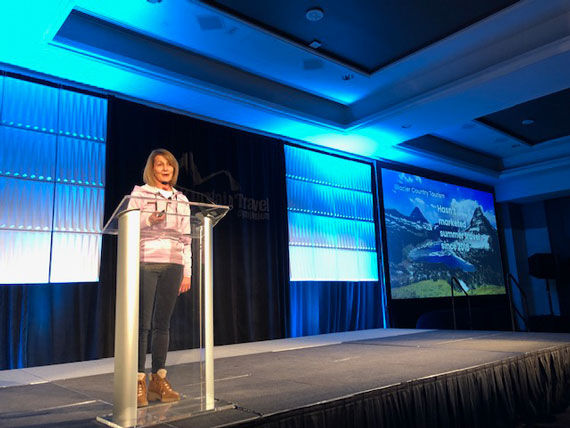Destinations are using geolocation data to manage tourism growth: Travel Weekly
VAIL, Colo. — With the pandemic having heightened concerns about overtourism, some destination marketing organizations are turning to geolocation data to find creative solutions.
Explore Asheville, for example, is using Zartico’s geolocation data to make an effort to disperse people more widely within the North Carolina city and even across the vicinity.
Speaking at the Mountain Travel Symposium conference here, Explore Asheville CEO Victoria Isley said that by looking at the patterns of visitor movements throughout the destination, Explore Asheville can strategically deploy wayfinding signs to encourage people to visit attractions outside of the more crowded downtown area.
In Jasper, Alberta, destination managers are also using geolocation data.
One example: Tourism Jasper examined the correlation between weather conditions and visitation within Jasper National Park and its Marmot Basin ski area.
“We know that if we have the right weather and the right precipitation, we don’t have to spend on marketing. People are going to come anyway,” said Tourism Jasper CEO James Jackson.
The exercise is helping Tourism Jasper pinpoint the sweet spot from a weather standpoint, enabling it to spend marketing dollars more efficiently.
Tourism Jasper and Jasper National Park also look at visitor-movement patterns to help the park efficiently deploy snow-clearing equipment along its Icefields Parkway scenic drive.
Such analyses are enabled by the enormous reams of data that Zartico synthesizes. According to its website, Zartico receives data from more than 1.8 billion mobile devices daily.
“Using geolocation data to understand visitor movement allows us to answer and better anticipate where, when and how people move throughout a destination,” Zartico says. “When you understand this, you gain awareness of the visitor and resident effect and create a better experience for everyone.”
Tourism marketers are also putting spending data to creative use. Cathy Ritter, CEO of consulting company Better Destinations, said that Zartico’s visitor-spending data compiled through credit card transactions showed that approximately half of the money spent in Clear Creek County (just west of Denver) over the past three years was at gas stations.
Armed with that knowledge, destination promoters know to apportion more money toward marketing the destination at the pump.
Mountain Travel Symposium is convening in person for the first time in three years. The event is organized by the meetings group of Northstar Travel Media (Travel Weekly’s parent company).
Source: Read Full Article




